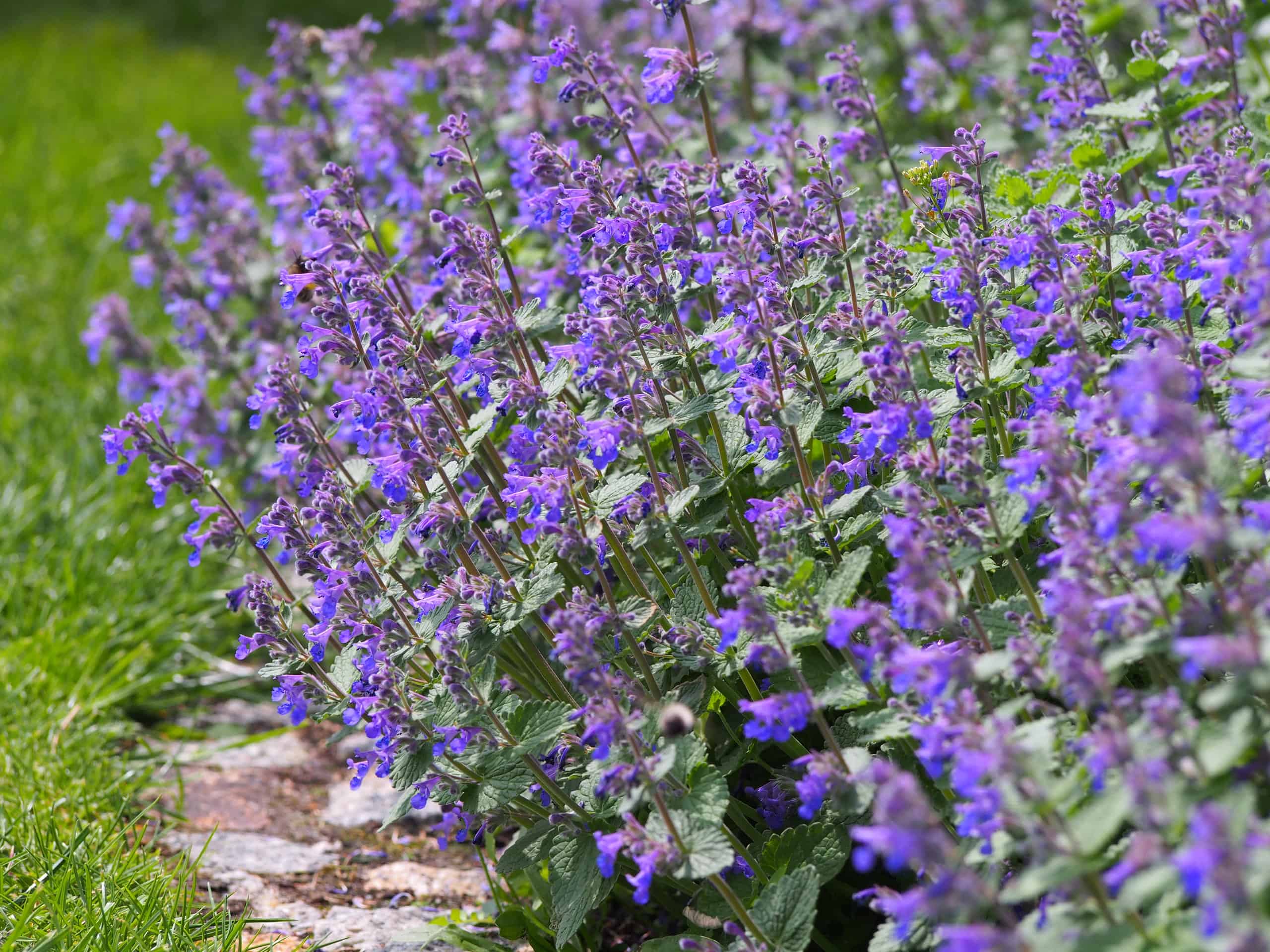Fleas cause discomfort and lasting problems for homeowners and pets alike. Luckily, you can bid farewell to pesky, itchy fleas without harsh pesticides by strategically planting flea-repelling shrubs and flowers in your outdoor space. From the soothing scent of lavender to the earthy aroma of rosemary, discover some plants that repel fleas effectively.
What Attracts Fleas to Your Yard?
Plants are a valuable asset in your pest-fighting arsenal, but they work best combined with other preventative measures. Specific conditions and elements in your landscape create an attractive habitat for fleas. Factors that attract fleas to your yard include:
- Moisture: Fleas need a humid environment to survive. Areas with poor drainage, waterlogged soil, or damp vegetation provide a breeding ground for the pests.
- Shade: The invaders avoid direct sunlight, thriving in areas with overgrown vegetation, trees, shrubs, and structures like patios or decks.
- Hiding spots: Fleas shelter in unkempt areas, including tall grass, leaf litter, debris piles, and undisturbed environments.
- Wild animals: Raccoons, squirrels, and stray dogs or cats introduce fleas into your landscape.
- Food sources: Warm-blooded animals, like pets, attract fleas that feed on blood. Fleas are more likely to take up residence in your yard if there are plenty of hosts around.
- Warm temperatures: Fleas thrive in warm weather and are a nuisance in the summer months.
- Pest control: Natural predators like ants, spiders, and beetles can keep flea populations in check. Pest prevention methods that eliminate these helpful insects can lead to higher flea numbers.
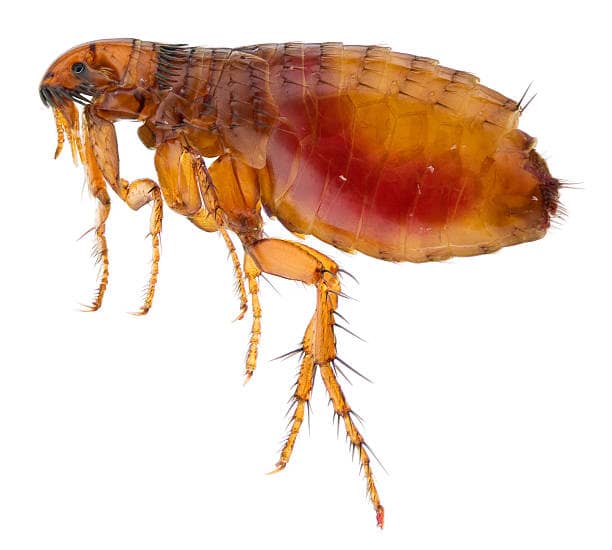
Fleas shelter in unkempt areas, including tall grass, leaf litter, debris piles, and undisturbed environments.
©iStock.com/coopder1
13 Plants That Repel Fleas
1. Catnip (Nepeta cataria)
Catnip provides positive effects for feline companions, but the herbaceous perennial also has flea-repelling properties. Its minty and lemony scent repels harmful pests, deer, and rabbits while attracting beneficial pollinators like bees and butterflies. It has a spreading growth habit that forms loose clumps through self-seeding.
Catnip produces heart-shaped, toothed leaves that grow along sturdy stems and reach heights up to 3 feet. Specimens bloom clusters of tubular, lipped flowers in shades of white or lavender in the spring and summer. Catnip thrives in well-draining soil and full to partial sun. Plant the herbaceous member of the mint family in lined garden beds, borders, or containers to control its spread.

Catnip originated in Europe and is also known as catmint or catswort.
©iStock.com/guppys
2. Chamomile (Chamaemelum nobile)
Chamomile is another flea-repelling perennial herb with a matting growth habit. The low-growing perennial produces aromatic, finely divided, feathery leaves and small, daisy-like flowers with white petals and yellow centers.
Chamomile tolerates a range of light conditions from full sun to partial shade. Additionally, it is mildly frost tolerant. Harvest and dry flower heads for herbal tea or aromatherapy. Plant chamomile as edging, ground cover, or in between stepping stones for a decorative effect.
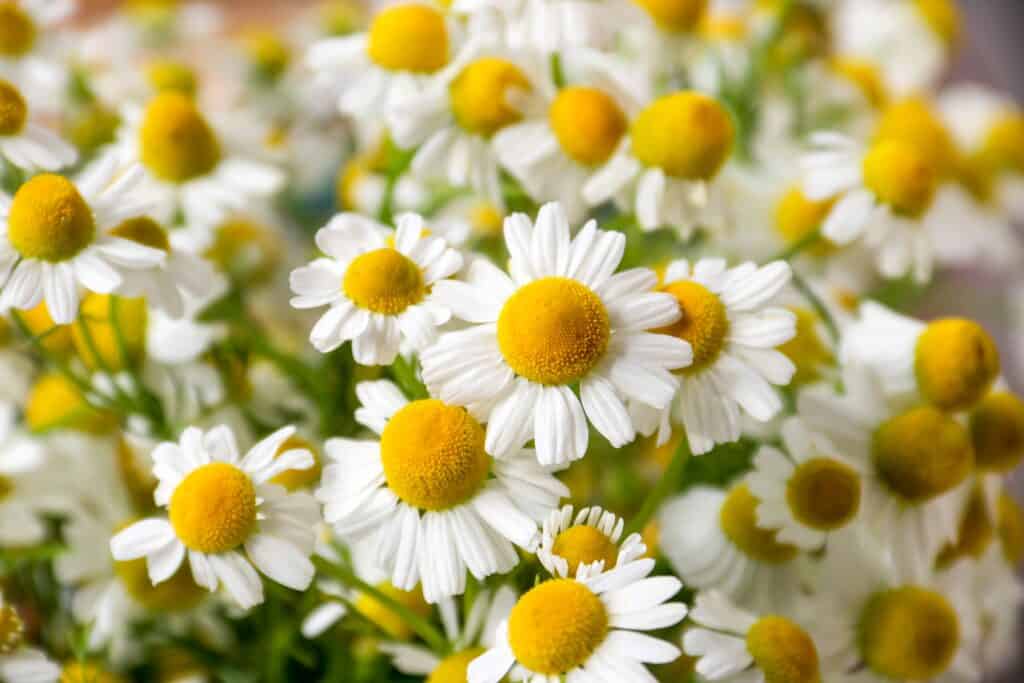
Ancient Egyptians dedicated chamomile to the sun god Ra.
©Olesya Myzzz/Shutterstock.com
3. Citronella Grass (Cymbopogon nardus)
Ornamental grasses, like citronella grass, make great additions to tropical landscapes. Citronella grass is well-known for its insect-repelling properties and is effective at repelling mosquitoes. However, the perennial evergreen grass repels most insects, including fleas.
Specimens grow up to 6 feet in a clumping pattern and produce long, narrow leaves with a lemony scent. Citronella grass thrives in full sunlight and subtropical to tropical climates. It tolerates a variety of soil types so long as it is well-draining. Plant the ornamental cultivar in outdoor areas near patios, gardens, and decks to create a mosquito- and flea-free outdoor space.
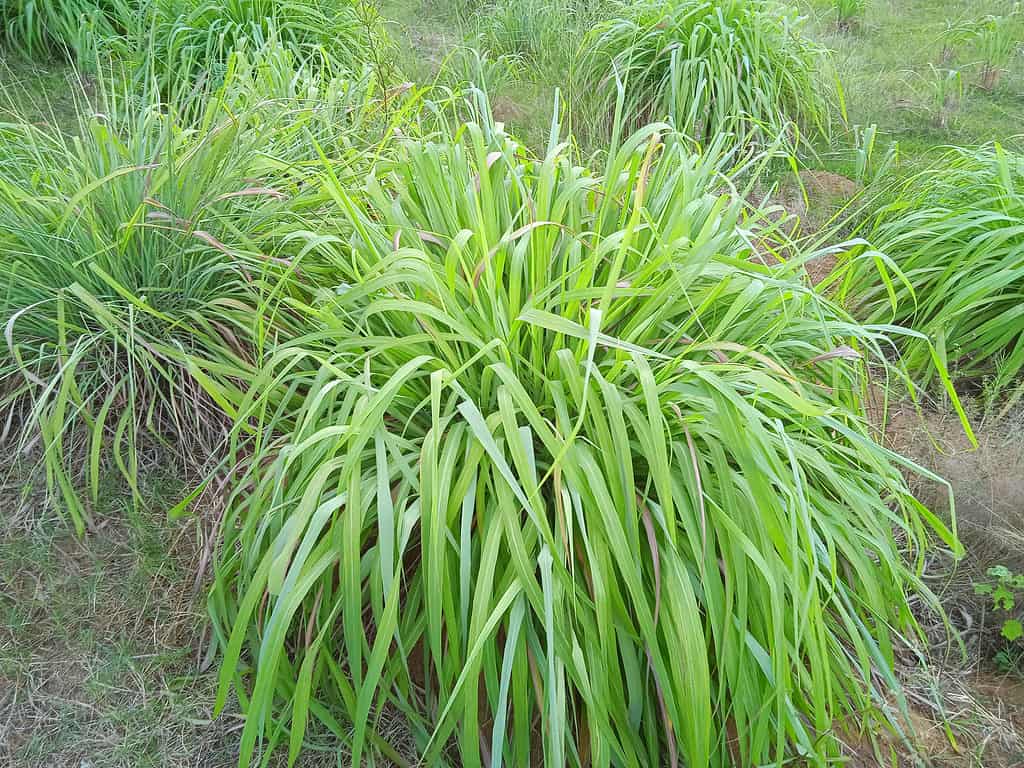
Citronella grass has culinary properties.
©iStock.com/Siti Aisah
4. Common Sage (Salvia officinalis)
Common sage, or culinary sage, is an aromatic herb with a rich history. It has culinary, medicinal, and practical uses and is also a natural insect repellent. The woody perennial has hairy grayish-green leaves. It produces small tubular flowers and a strong, earthy aroma.
Common sage prefers temperate climates and full sun. Grow the perennial herb near outdoor seating areas or entryways. Likewise, the culinary herb thrives in beds or containers to deter insects and fleas. Specimens are a staple in culinary traditions and are used in a variety of dishes. Their medicinal uses support digestion and soothe sore throats.
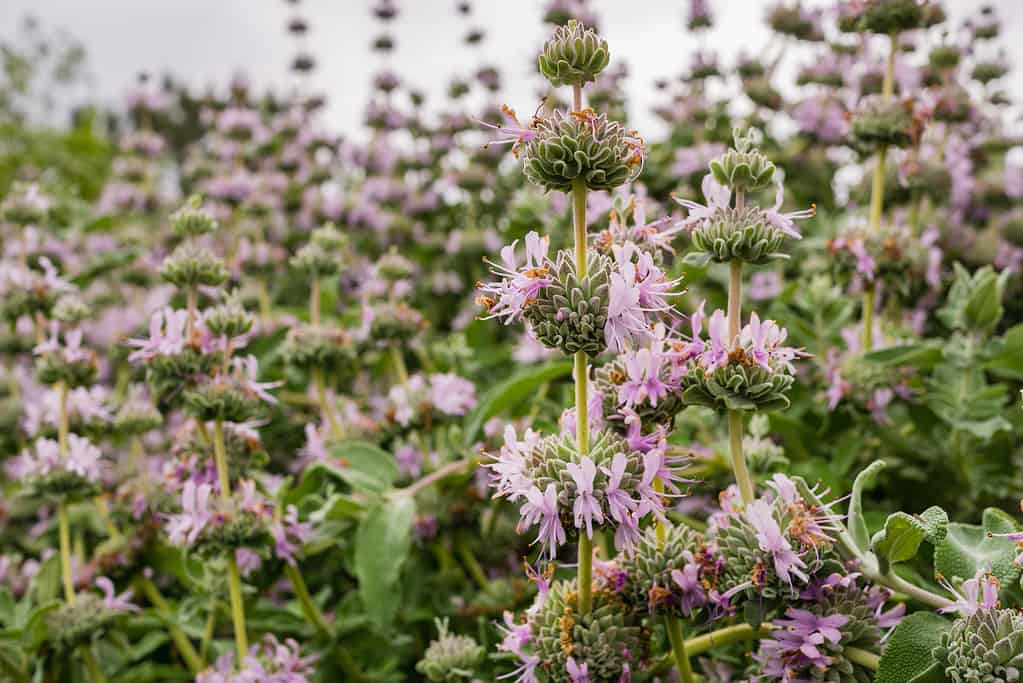
Sage has deep roots that can reach up to 40 inches long.
©Sundry Photography/iStock via Getty Images
5. Lavender (Lavandula spp.)
Lavender is a well-known herb thanks to its enchanting fragrance and bright purple flowers. It is a natural insect and animal repellent. The perennial herb produces narrow leaves and tall spikes of small, fragrant flowers that range in color from purple to pink.
Lavender thrives in full sunlight, warm climates, and well-draining soil. Specimens are drought-tolerant and attract beneficial pollinators to your garden. Plant the aromatic herb near windows, doors, or outdoor seating areas, but keep away from dogs, cats, and horses. Additionally, harvest and dry flowers for use in sachets as personal mosquito and flea deterrents.
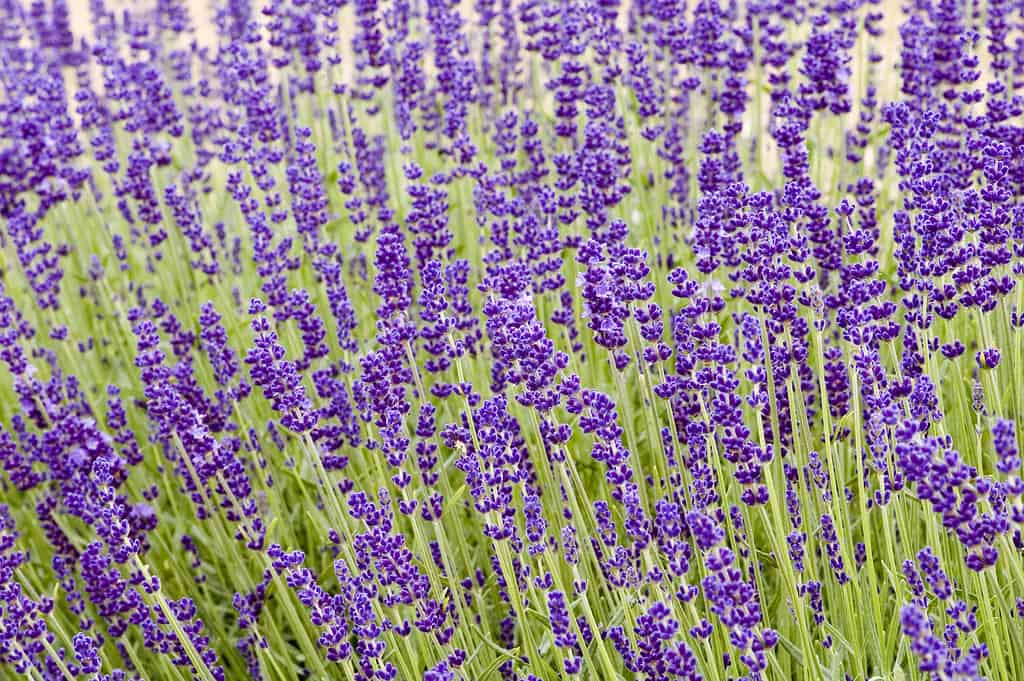
Lavender soothes burns, induces sleep, and reduces stress.
©gardendata/ via Getty Images
6. Lemon Basil (Ocimum basilicum)
Lemon basil is an annual herb known for its citrusy fragrance. Its aromatic compounds, or lemon-scented oils, deter pests like fleas, mosquitoes, and flies. Specimens thrive in full sunlight and love warm temperatures, but they are sensitive to frost and waterlogged roots.
Lemon basil produces small white flower clusters along green stems and edible oblong leaves. Harvest mature leaves for salads, sauces, and other dishes. Similarly, dry and steep leaves are used for refreshing herbal tea. Plant lemon basil in garden beds, raised boxes, or containers to reduce pests. The annual herb makes a great companion plant for other garden vegetables like tomatoes, peppers, and other herbs.
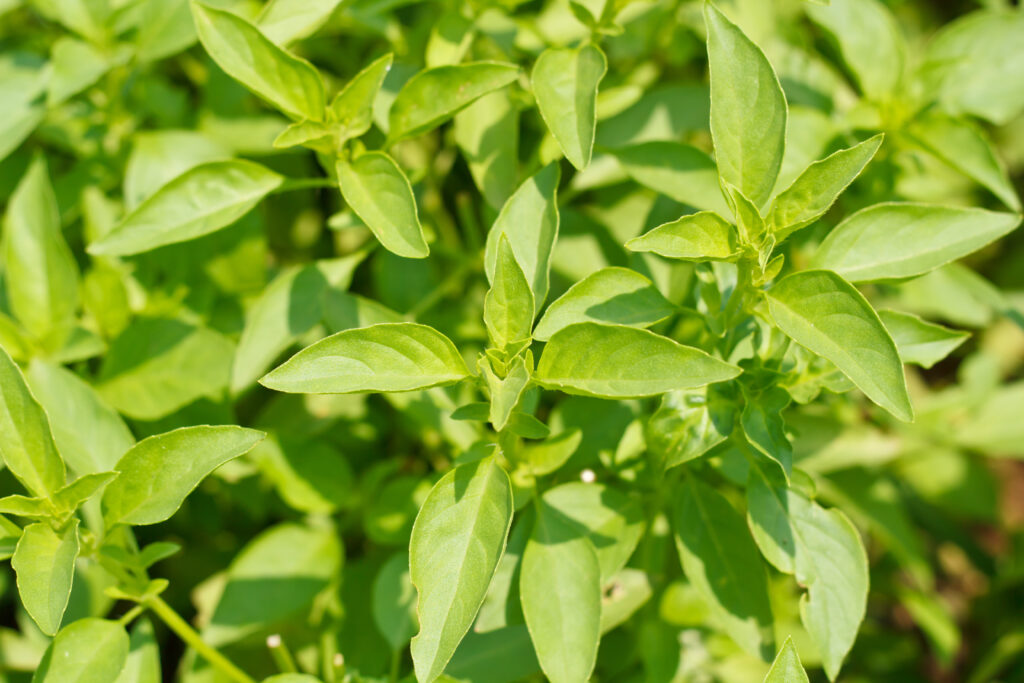
Lemon basil is a hybrid variety and a member of the mint family.
©TairA/Shutterstock.com
7. Lemongrass (Cymbopogon citratus)
Another fragrant and versatile herb, lemongrass has a distinct lemony aroma and flavor. Landscapers and chefs alike appreciate the ornamental grass for its culinary and practical uses. It is a natural flea and insect repellent thanks to the compound citronella and grows to heights up to 4 feet.
Lemongrass produces long, slender blades in a clumping pattern. It has a vibrant green color and thrives in full sunlight. The herbaceous grass is frost-sensitive but grows as an annual in cooler regions during the summer months. Plant this low-maintenance grass in beds and borders to add texture to your landscape.
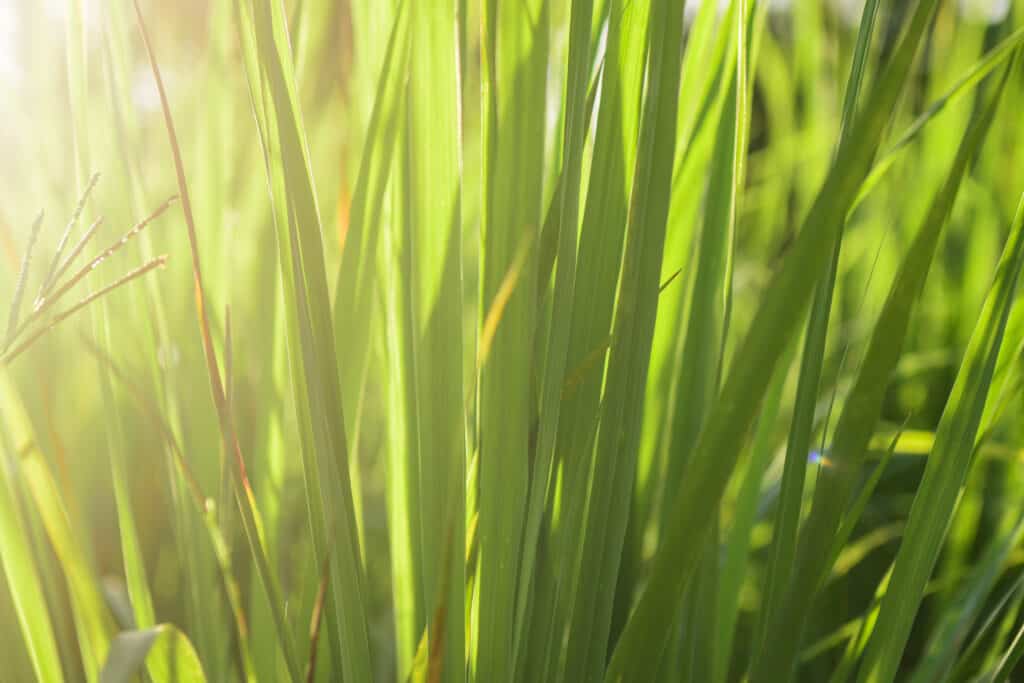
Citral is derived from lemongrass and used in perfumery.
©iStock.com/ATP-Photographer
8. Marigold (Tagetes spp.)
Marigold is a genus of flowering plants that offers ornamental beauty and insect-repelling properties. The annuals produce vibrant flowers in various shades of orange, yellow, or red and aromatic, fern-like foliage. Blooms have a distinctive appearance, with multiple layers of petals around a central disk.
Above all, marigolds grow best in warm climates and full sun. However, specimens tolerate a variety of soils and emit a distinct odor that deters insects, including aphids, fleas, and nematodes. Plant marigolds in vegetable gardens, beds, borders, and containers to create a pest-free landscape.

Marigolds are a symbol of good luck in folklore.
©Nick Pecker/Shutterstock.com
9. Mint (Mentha spp.)
Mint is a genus of fast-growing herbaceous perennials with culinary uses and aromatic qualities. Additionally, the culinary wonder also has insect-repelling properties. It produces square stems and toothed or serrated leaves that are used in culinary dishes and aromatherapy. Small, tubular flowers grow in clusters along spikes.
Mint grows best in partial to full sun and cooler temperatures. It is mildly frost-tolerant and does not perform well in extreme heat. Plant mint around outdoor seating areas, near entrances, and in garden beds to create an insect-resistant environment.

Mint is named after a Greek mythical character named Menthe.
©lpjp/Shutterstock.com
10. Mum (Chrysanthemum)
Mums repel fleas late in the outdoor season. They are members of the aster family, and the highly decorative perennials produce multiple layers of petals surrounding a central disk in a wide range of colors, shapes, and sizes. In short, the overall flower shape varies depending on the variety.
Mums love full sunlight and the cooler temperatures of fall. They contain pyrethrin, a natural insecticide that affects the nervous system of insects, including fleas. Plant the flowering perennial in borders or containers, but keep in mind it is toxic to dogs, cats, and horses.

Chrysanthemums are one of the four noble plants in Chinese culture.
©Mariia Romanyk/Shutterstock.com
11. Rosemary (Rosmarinus officinalis)
The aromatic evergreen herb, rosemary, holds significance thanks to its culinary, aromatic, and medicinal properties. It is a natural insect-repellent and also a bushy evergreen shrub. It produces two-color, needle-like leaves in shades of dark green and silver. Additionally, specimens produce small flowers in various shades of lavender, pink, or blue.
Rosemary makes great additions to hedges, herb gardens, beds, or borders. It prefers full sun and warm climates. Rosemary’s powerful aroma repels a range of insects, including mosquitoes, flies, and fleas. Specimens are low-maintenance and require very little pruning.

Rosemary thrives in coastal areas, and its name means sea mist.
©Maren Winter/Shutterstock.com
12. Tansy (Tanacetum vulgare)
Tansy is a perennial and flowering herb with culinary uses and aromatic properties that also repels insects, including fleas. The robust herb produces fern-like, divided leaves and clusters of button-like yellow flowers.
Tansy loves full sun and well-draining soils. It also adapts to various climates. Specimens are low-maintenance and naturally deter most animals, including deer. Plant the vibrant perennial in garden beds, borders, and containers for a pop of sunny color. Cut stems make great additions to floral arrangements.
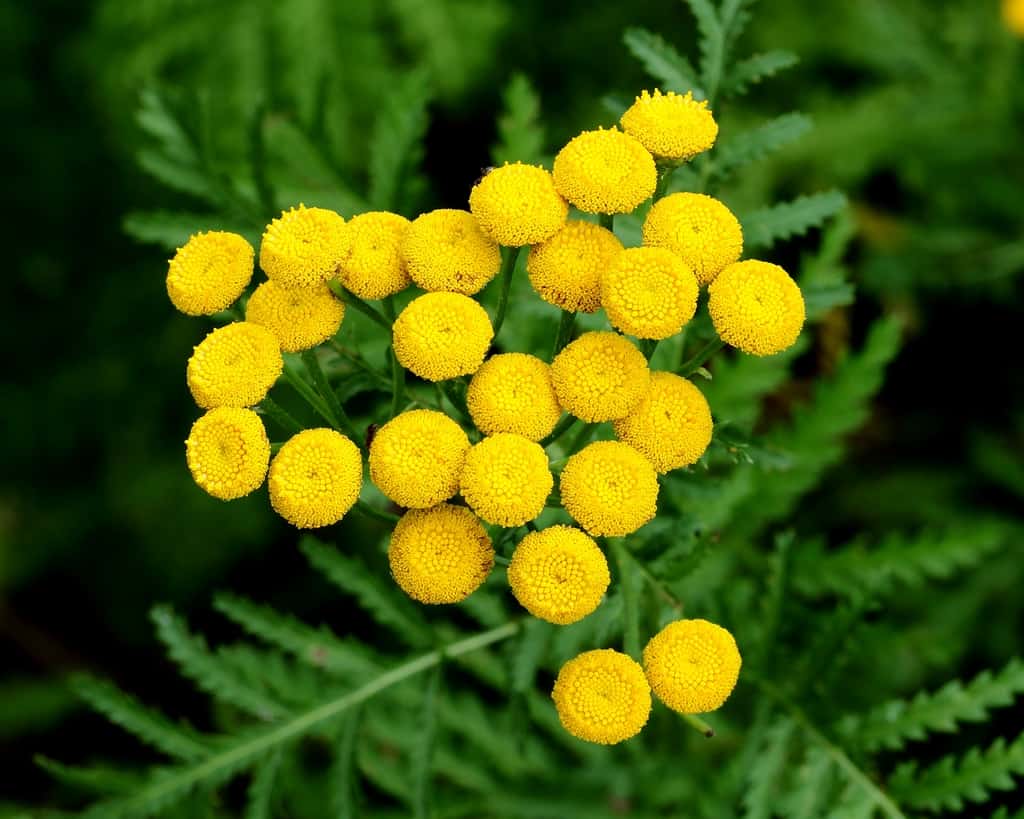
Tansy blooms are long-lasting, and their name is derived from a Greek word meaning immortal.
©Dominicus Johannes Bergsma / CC BY-SA 4.0, via Wikimedia Commons – Original / License
13. Wormwood (Artemisia absinthium)
Wormwood is an upright perennial and also an aromatic herb. Specimens have a woody base and produce divided, silvery gray leaves and inconspicuous yellow flowers. Above all, wormwood’s strong and bitter aroma is a natural insect and flea repellent. Similarly, its odorous nature also deters deer, rabbits, and mice.
The herbaceous perennial is an ingredient in absinthe, but it is toxic to humans and animals and may cause skin irritation. Wormwood thrives in full sun but tolerates partial shade. It prefers cooler climates and well-draining soils. Plant wormwood in beds, borders, and containers. Lastly, harvest and dry leaves for sachets to deter moths.

Wormwood has roots in ritual work and is believed to aid psychic reception and relieve negativity.
©iStock.com/Larysa Lyundovska
Other Ways to Repel Fleas
Besides flea-repelling plants, consider these other methods for repelling fleas and other pests.
- Keep your lawn tidy: Regular lawn maintenance, including mowing and trimming, reduces hiding spots for fleas and their hosts.
- Limit wildlife access: Minimize sources of attractions, like trash cans and pet food, for rodents, rabbits, and other animals that carry fleas.
- Apply diatomaceous earth: Food-grade diatomaceous earth is a natural powder that damages the exoskeleton of insects. Sprinkle the powder in your yard, paying special attention to pet areas.
- Groom your pets: Bathe and groom your pets regularly to prevent fleas.
- Use proper irrigation techniques: Ensure your yard has proper drainage. Over-watering creates a moist environment that attracts fleas.
- Opt for flea treatments: Professional outdoor flea treatments are a safe and effective way to eliminate fleas from your landscape. Furthermore, work with your professional to develop a customized approach. Most companies offer pet-specific products to protect your furry family members.
Summary: 13 Plants That Repel Fleas Effectively
| Number | Common Name | Season of Interest |
|---|---|---|
| 1 | Catnip | Spring to fall |
| 2 | Chamomile | Summer |
| 3 | Citronella Grass | Year-round |
| 4 | Common Sage | Year-round |
| 5 | Lavender | Spring to summer |
| 6 | Lemon Basil | Spring to fall |
| 7 | Lemongrass | Year-round |
| 8 | Marigold | Spring to fall |
| 9 | Mint | Spring to fall |
| 10 | Mum | Late summer to fall |
| 11 | Rosemary | Year-round |
| 12 | Tansy | Summer |
| 13 | Wormwood | Spring to fall |
Thank you for reading! Have some feedback for us? Contact the AZ Animals editorial team.

